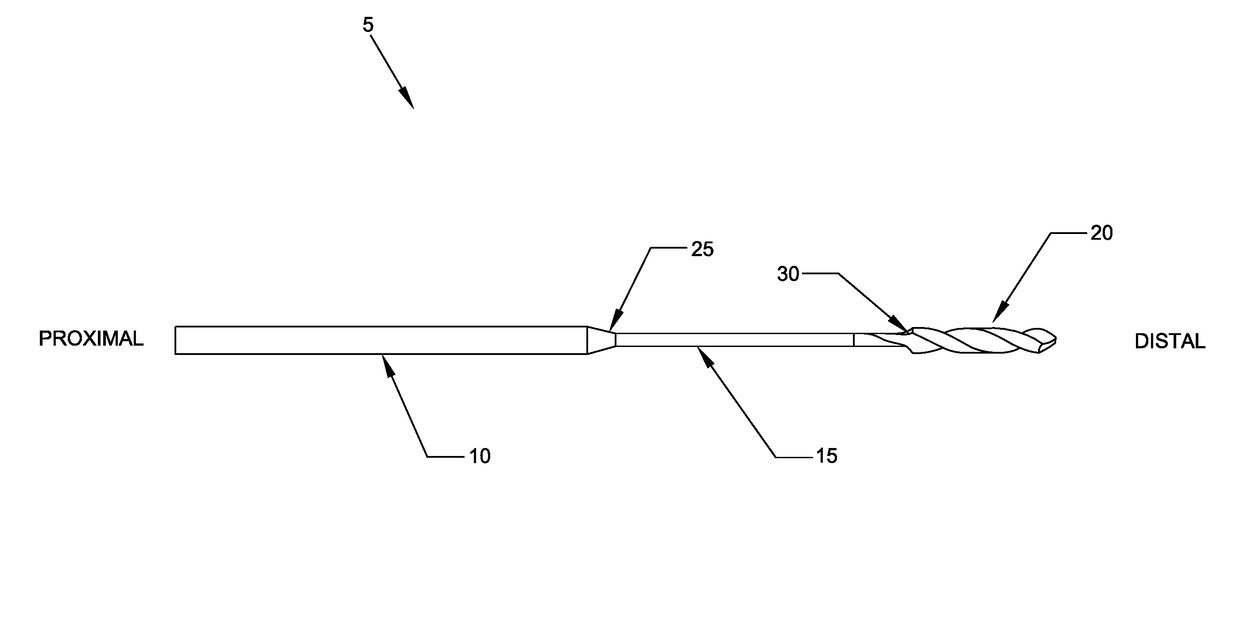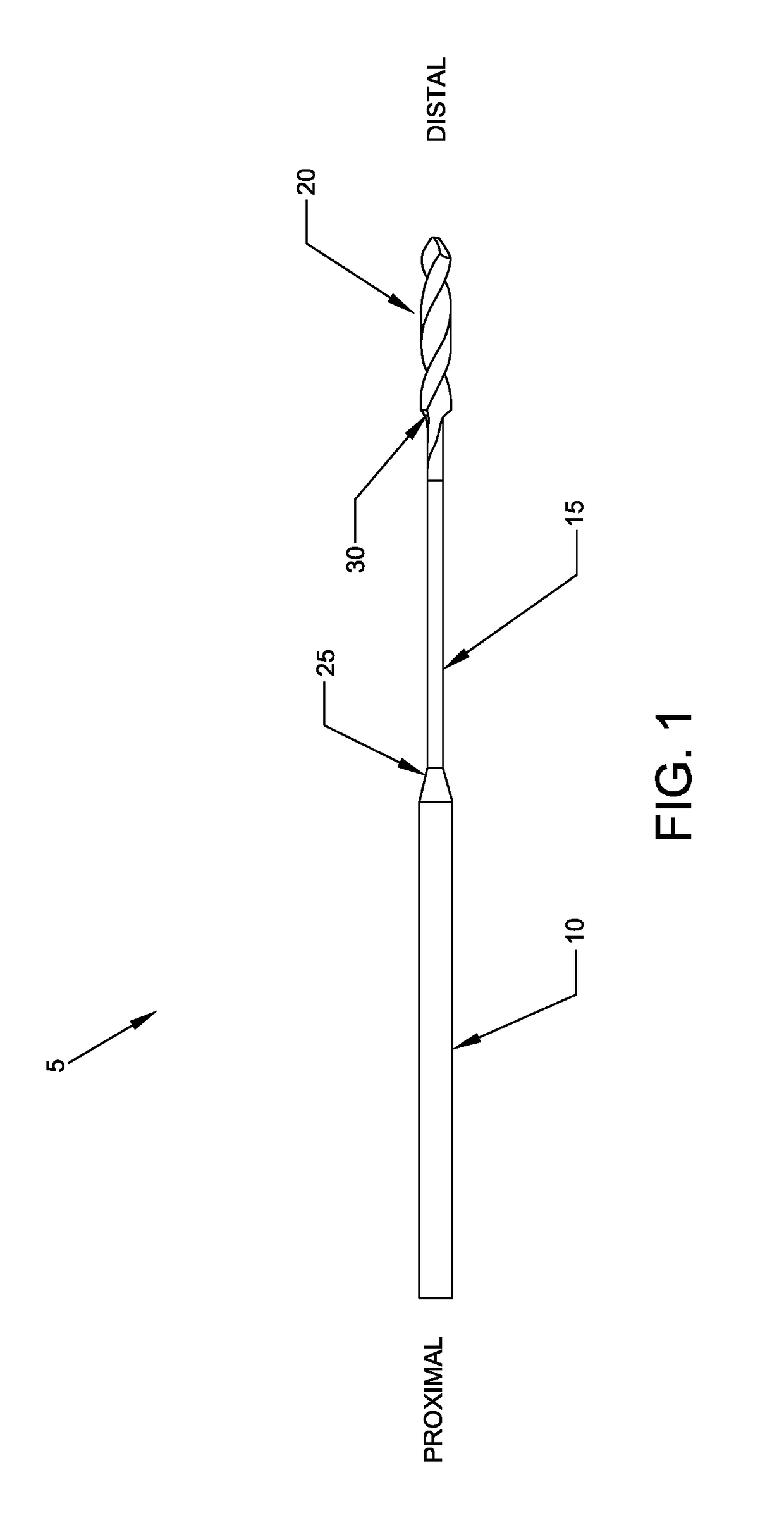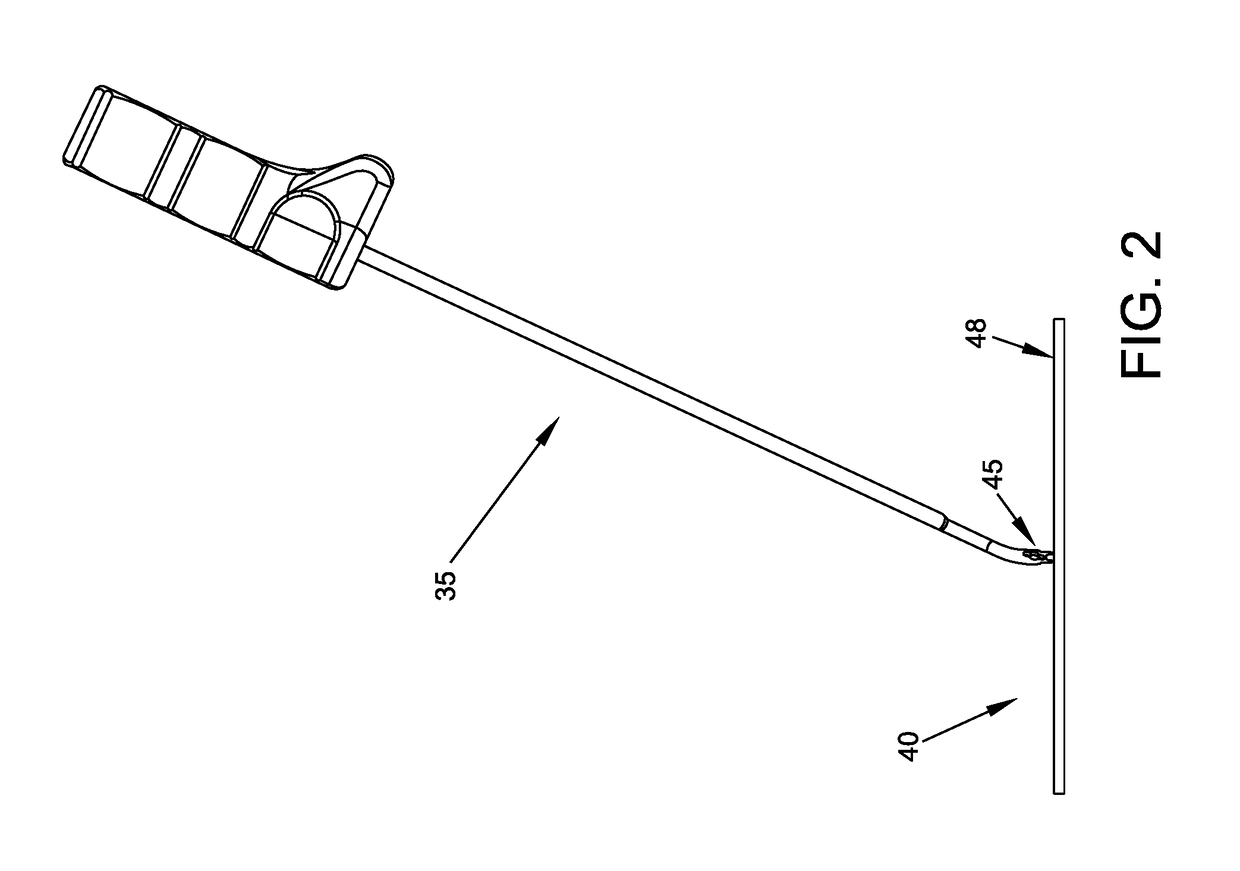Flexible drill bit and angled drill guide for use with the same
a flexible drill bit and drill guide technology, applied in bone drill guides, medical science, surgery, etc., can solve the problems of pathology and approach to the interior of the hip joint, pathology and pathology pathology, and generally relatively difficult for surgeons to perform minimally-invasive procedures on the hip joint. , to achieve the effect of narrowing the lumen
- Summary
- Abstract
- Description
- Claims
- Application Information
AI Technical Summary
Benefits of technology
Problems solved by technology
Method used
Image
Examples
Embodiment Construction
Flexible Drill Bit Having a “Unibody” Construction
[0163]Looking first at FIG. 1, there is a shown a flexible drill bit 5 formed in accordance with the present invention. Flexible drill bit 5 comprises three sections, i.e., a full diameter shaft portion 10, a reduced diameter shaft portion 15, and a fluted cutting tip portion 20. Full diameter shaft portion 10, reduced diameter shaft portion 15, and fluted cutting tip portion 20 are all formed integral with one another so as to create a flexible drill bit having a “unibody” construction. If desired, a transition area 25 may be formed between full diameter shaft portion 10 and reduced diameter shaft portion 15, and / or a transition area 30 may be formed between reduced diameter shaft portion 15 and fluted cutting tip portion 20.
[0164]The “unibody” construction eliminates the need for a mechanical joint connecting the cutting tip of the flexible drill bit (e.g., fluted cutting tip portion 20) to the flexible portion of the flexible dril...
PUM
 Login to View More
Login to View More Abstract
Description
Claims
Application Information
 Login to View More
Login to View More - R&D
- Intellectual Property
- Life Sciences
- Materials
- Tech Scout
- Unparalleled Data Quality
- Higher Quality Content
- 60% Fewer Hallucinations
Browse by: Latest US Patents, China's latest patents, Technical Efficacy Thesaurus, Application Domain, Technology Topic, Popular Technical Reports.
© 2025 PatSnap. All rights reserved.Legal|Privacy policy|Modern Slavery Act Transparency Statement|Sitemap|About US| Contact US: help@patsnap.com



